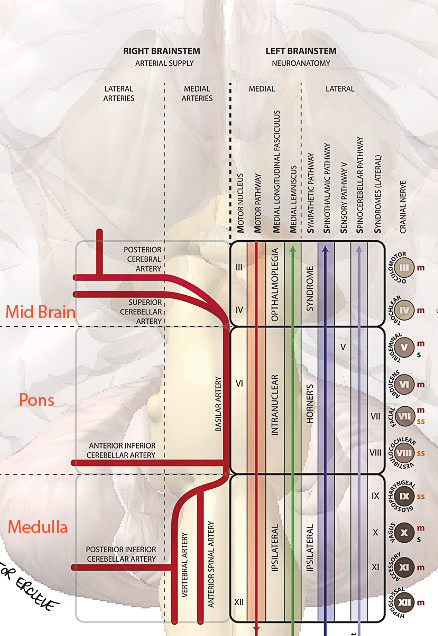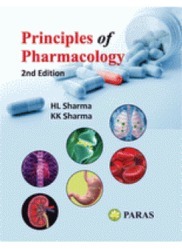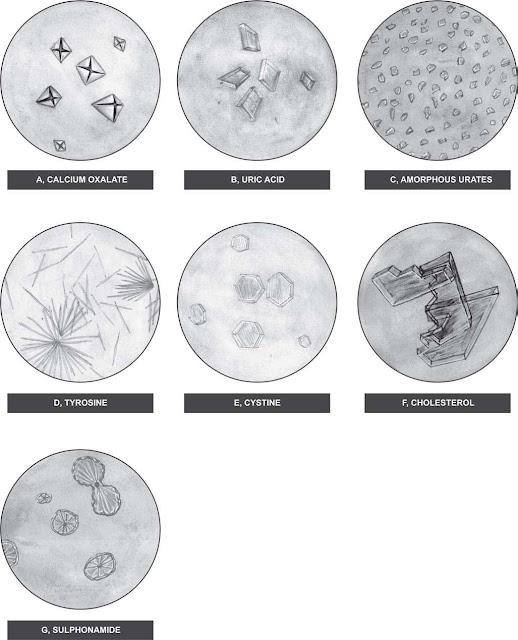Localisation of Brainstem lesions : Rule of Four

Ugh got destroyed by another brainstem lesion question on Qbank? Having hard time with neurology? then you are at right place.. a simplified method for answering the question ‘Where is the lesion?’ Below I have summarized RULE OF 4. In the rule of 4 there are 4 rules: There are 4 structures in the ‘midline‘ beginning with M There are 4 structures to the ‘side‘ (lateral) beginning with S There are 4 cranial nerves below the pons, 4 in the pons and 4 above the pons. The 4 motor nuclei that are in the mid line are those that divide equally into 12 except for 1 and 2, that is 3, 4, 6 and 12 (5, 7, 9 and 11 are in the lateral brainstem). The 4 Medial structures and the associated deficits are: M otor pathway (or corticospinal tract): CL weakness of the arm and leg M edial Lemniscus: CL loss of vibration and proprioception in the arm and leg M LF: IPSI inter-nuclear ophthalmoplegia (failure of adduction of the IPSI eye +nystagmus in the opposite eye as it lo


